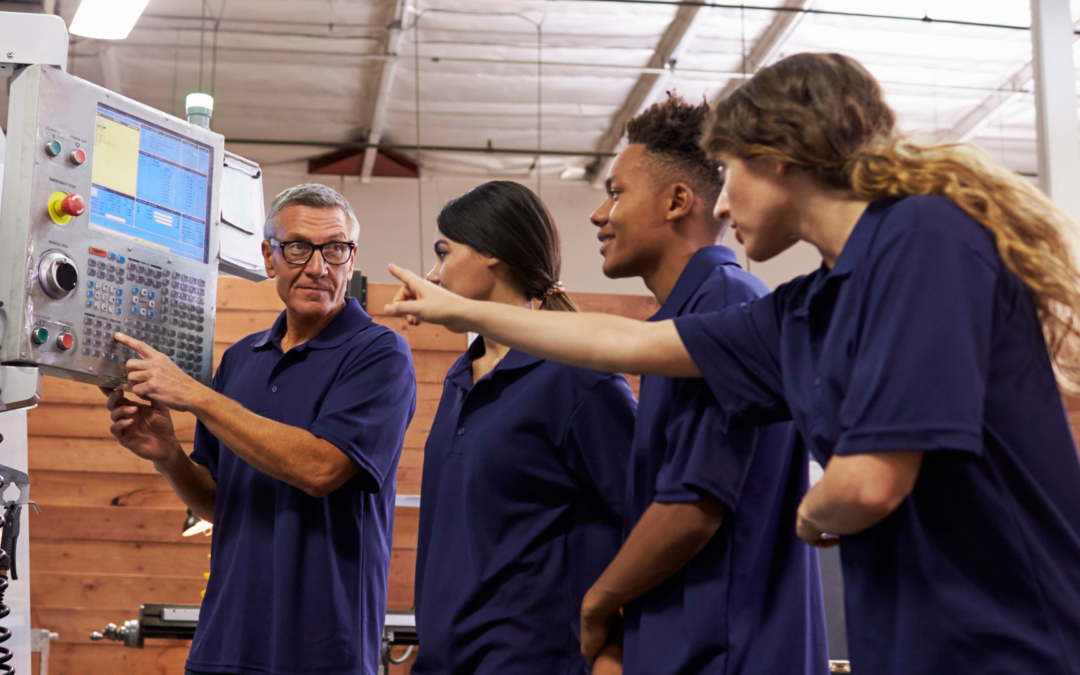Workforce development strategies in manufacturing play a crucial role in addressing the evolving needs of the industry, ensuring that businesses remain competitive, and fostering the growth of skilled labor. With advancements in technology, changes in consumer demands, and globalization, manufacturing companies must continuously adapt their workforce strategies to remain agile and efficient. Here’s an exploration of key strategies employed in workforce development within the manufacturing sector:
- Skills Training Programs
- Technology Integration
- Continuous Learning Culture
- Cross-Training Initiatives
- Collaboration with Educational Institutions
- Employee Empowerment and Engagement
- Diversity and Inclusion
Skills Training Programs:
Manufacturing companies often invest in comprehensive skills training programs to equip their employees with the necessary technical skills. These programs may include on-the-job training, apprenticeships, and vocational courses tailored to the specific needs of the industry. By providing employees with opportunities to enhance their skills, companies can improve productivity, quality, and innovation within their operations.
Technology Integration:
In today’s digital age, manufacturing processes are becoming increasingly automated and reliant on advanced technologies such as robotics, artificial intelligence, and data analytics. Workforce development strategies in manufacturing involve training employees to adapt to and operate these technologies effectively. This may involve collaboration with technology vendors, universities, or specialized training institutes to ensure that employees are proficient in utilizing the latest tools and equipment
Continuous Learning Culture:
Manufacturing companies are embracing a culture of continuous learning to foster employee growth and development. This involves encouraging employees to pursue further education, attend workshops, seminars, and industry conferences to stay updated on emerging trends and best practices. By promoting a learning culture, companies can nurture a skilled workforce capable of adapting to changing market dynamics and driving innovation within the organization.
Cross-Training Initiatives:
Cross-training initiatives involve training employees to perform multiple tasks or roles within the manufacturing process. This not only enhances employee versatility but also provides companies with greater flexibility in resource allocation and production planning. Cross-training reduces dependency on individual skill sets, minimizes downtime, and enables smoother operations, particularly during peak demand periods or unexpected disruptions.
Collaboration with Educational Institutions:
Manufacturing companies often collaborate with educational institutions such as technical schools, community colleges, and universities to develop tailored training programs and curricula aligned with industry needs. These partnerships may include internships, co-op programs, and joint research initiatives aimed at nurturing the next generation of skilled manufacturing professionals. By actively engaging with educational institutions, companies can ensure a pipeline of qualified talent and bridge the skills gap in the workforce.
Employee Empowerment and Engagement:
Empowering employees by involving them in decision-making processes and recognizing their contributions fosters a sense of ownership and loyalty. Manufacturing companies implement strategies such as mentorship programs, performance incentives, and career development opportunities to engage and retain talent. By prioritizing employee well-being and professional growth, companies can create a positive work environment conducive to productivity and innovation.
Diversity and Inclusion:
Embracing diversity and inclusion is essential for creating a dynamic and resilient workforce in manufacturing. Companies are implementing strategies to attract and retain talent from diverse backgrounds, including women, minorities, and individuals with disabilities. By promoting a culture of inclusivity, companies can leverage a broader range of perspectives and experiences, driving creativity and problem-solving within the organization.
Conclusion
In conclusion, workforce development strategies in manufacturing are essential for building a skilled and adaptable workforce capable of meeting the evolving demands of the industry. By investing in skills training, technology integration, continuous learning, and employee engagement, manufacturing companies can enhance productivity, innovation, and competitiveness in the global market. Collaboration with educational institutions and a commitment to diversity and inclusion further strengthen the industry’s ability to thrive in an increasingly complex and dynamic environment.


Recent Comments